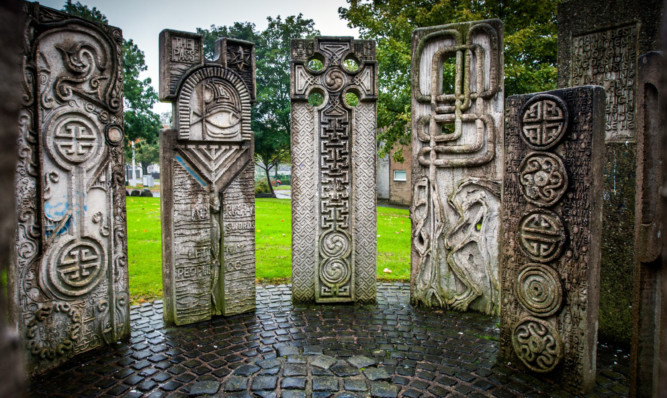One of the world’s foremost authorities on public art says that he understands why Fife councillors are reluctant to continue funding new installations.
David Harding, whose work continues to grace neighbourhoods throughout Glenrothes, says that quality not quantity should be the main driver for new pieces of work.
He spoke exclusively to The Courier as councillors in Fife call for a halt to vast spending on new pieces of artwork.
Having established numerous community landmarks in Glenrothes between 1968 and 1978, Mr Harding said emphasis should be placed on funding art that engaged people.
“Glenrothes was a New Town and I was working in areas where there were no people,” he said.
“We were designing housing and shopping centres before there was a population so when the houses were occupied the artwork was already there.
“I don’t think that period can be replicated.
“They were idyllic times in the 1960s.
“Public art was very rare then but now it is almost ubiquitous.
“Nowadays it is a victim of its own success.
“Every council and local authority has now bought into it.”
The issue of public art funding emerged earlier this year when councillors in Glenrothes approved a new £10.5 million care home project in South Parks.
A public art policy, recommending that 1% of the project be used to establish a piece of public art, meant that an installation in the region of £105,000 would need to be created, prompting anger from councillors across the political spectrum.
Developers are also understood to have expressed concerns, stating that the additional expense could actually jeopardise construction projects.
Though the “1% rule” has not been mandatory since 2012, a small number of developments have seen the inclusion of public art contributions, including the Tesco and Morrisons supermarkets in Dunfermline and Kirkcaldy, respectively.
Robin Edgar, the local authority’s lead officer for development strategy, said: “Fife Council encourages developers to integrate public art into development proposals to help deliver a high standard of design for buildings and spaces.
“The ‘1% for public art’ stopped being the council’s approach in 2012.
“We still want public art but not at a flat levy like this and not in all circumstances.
“We have a range of policy guidance in place that we follow from as early on in the design process as possible.”
